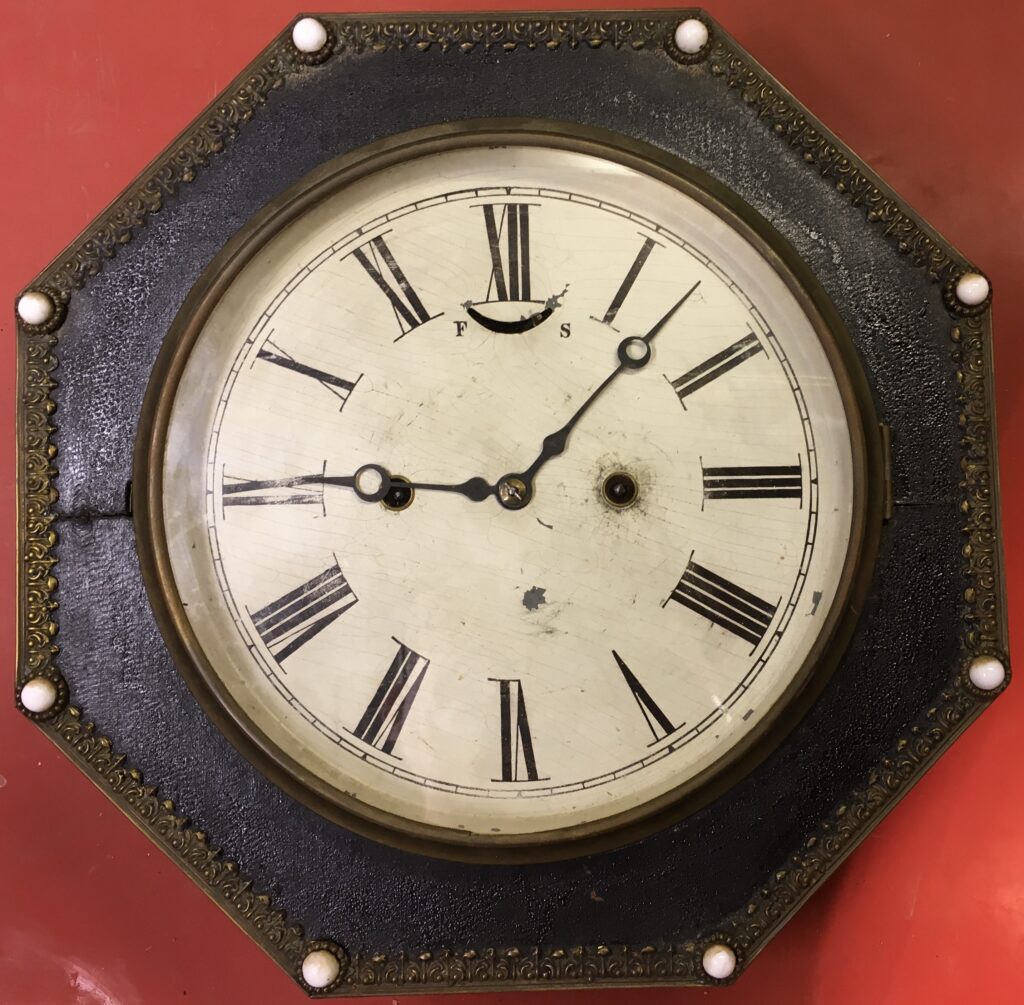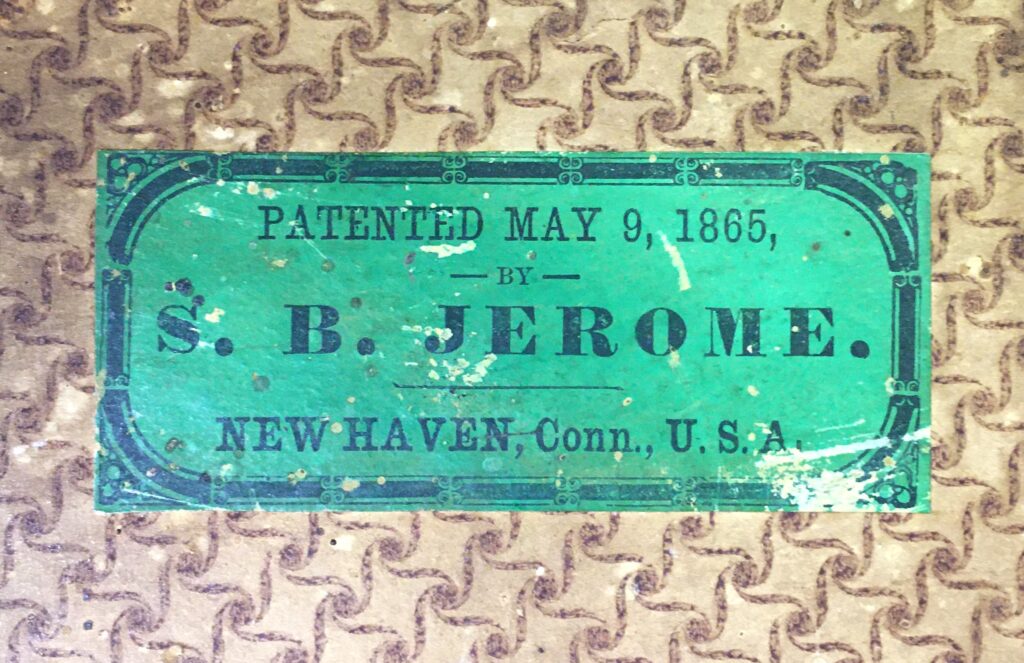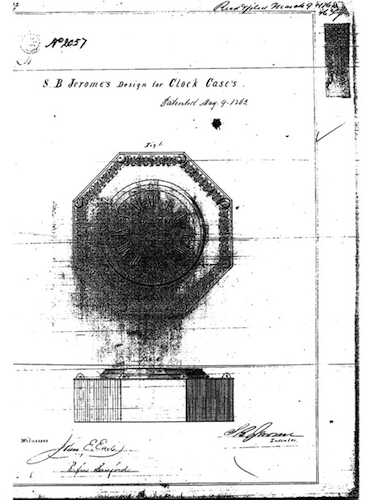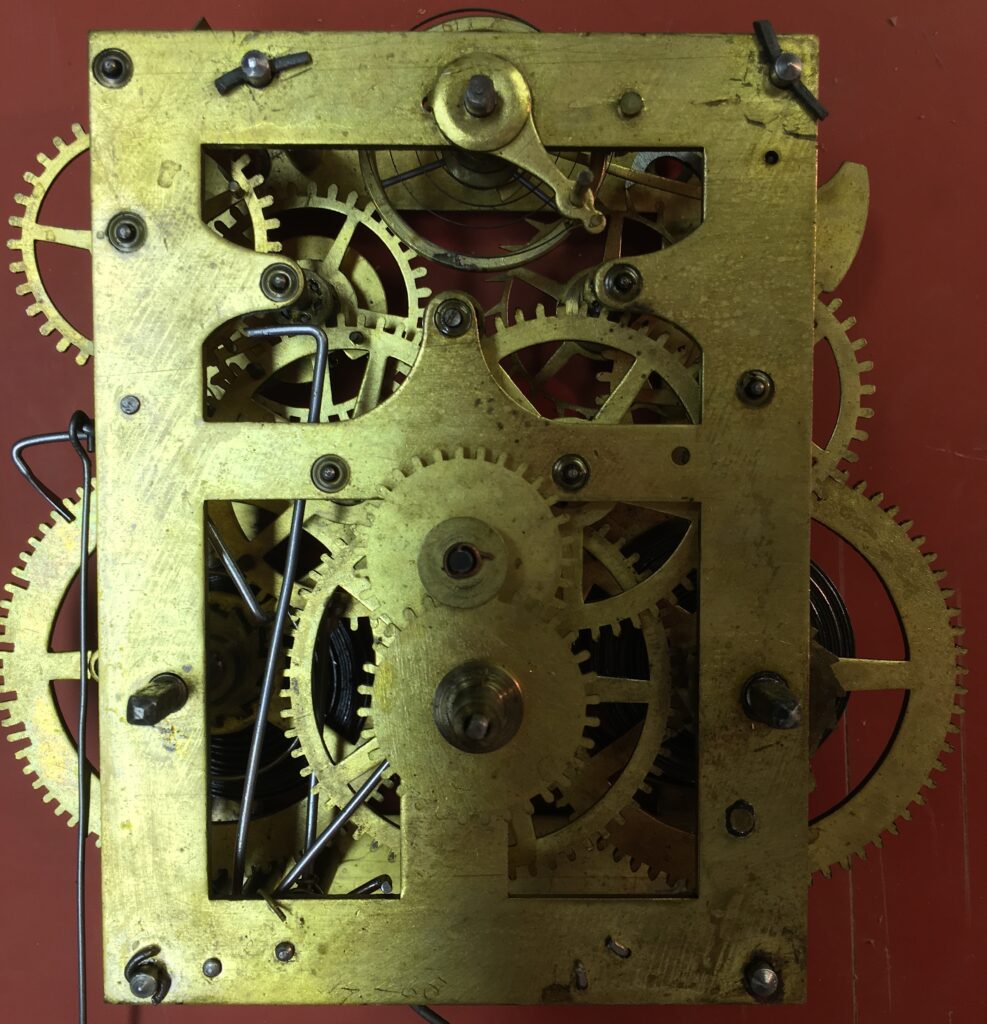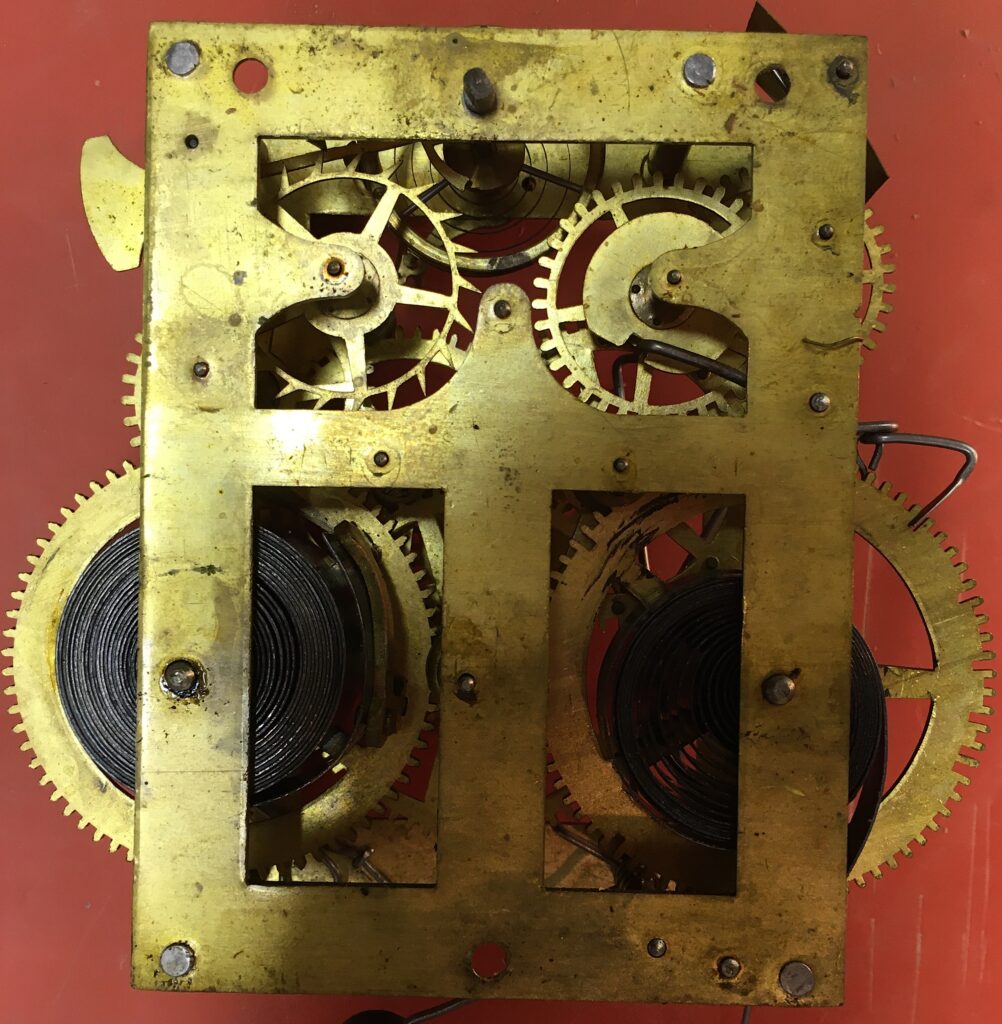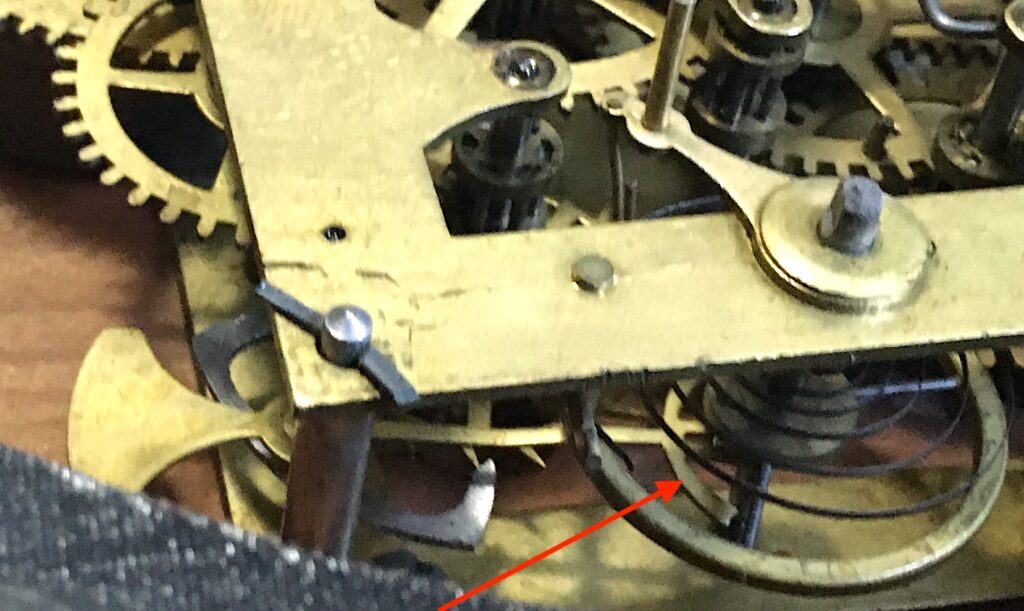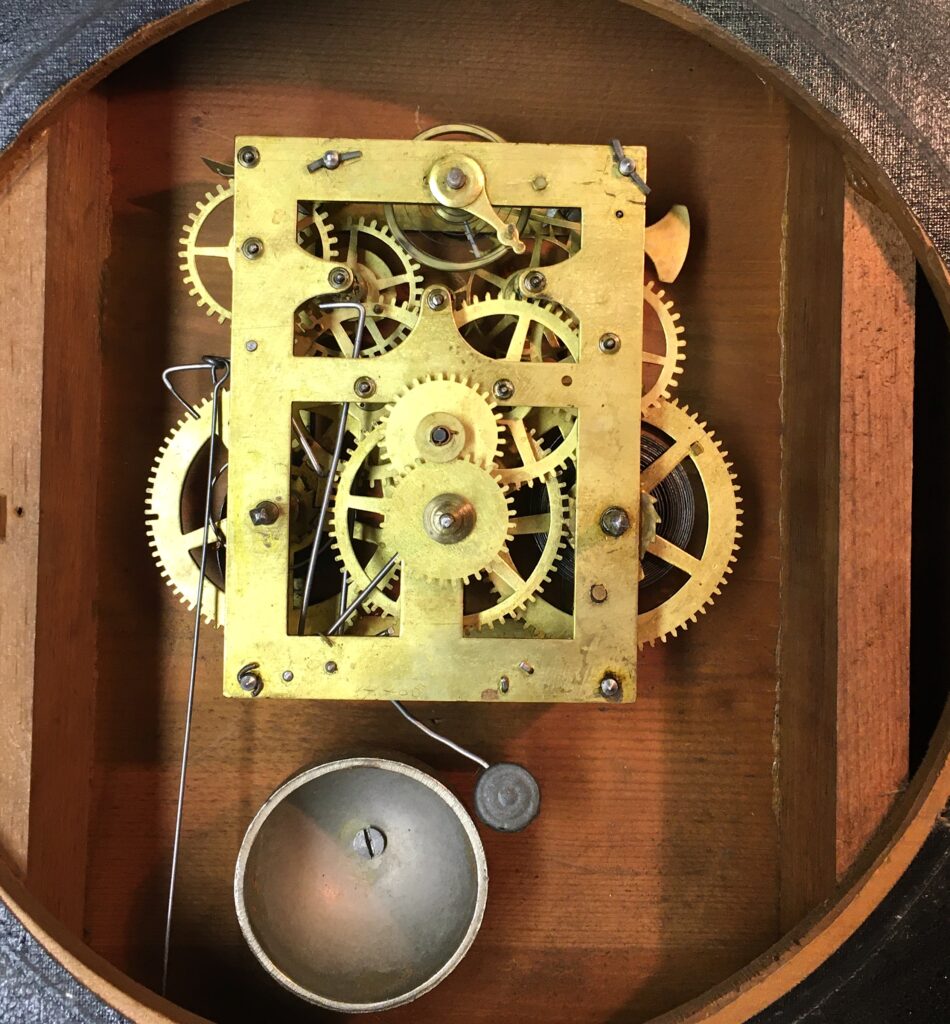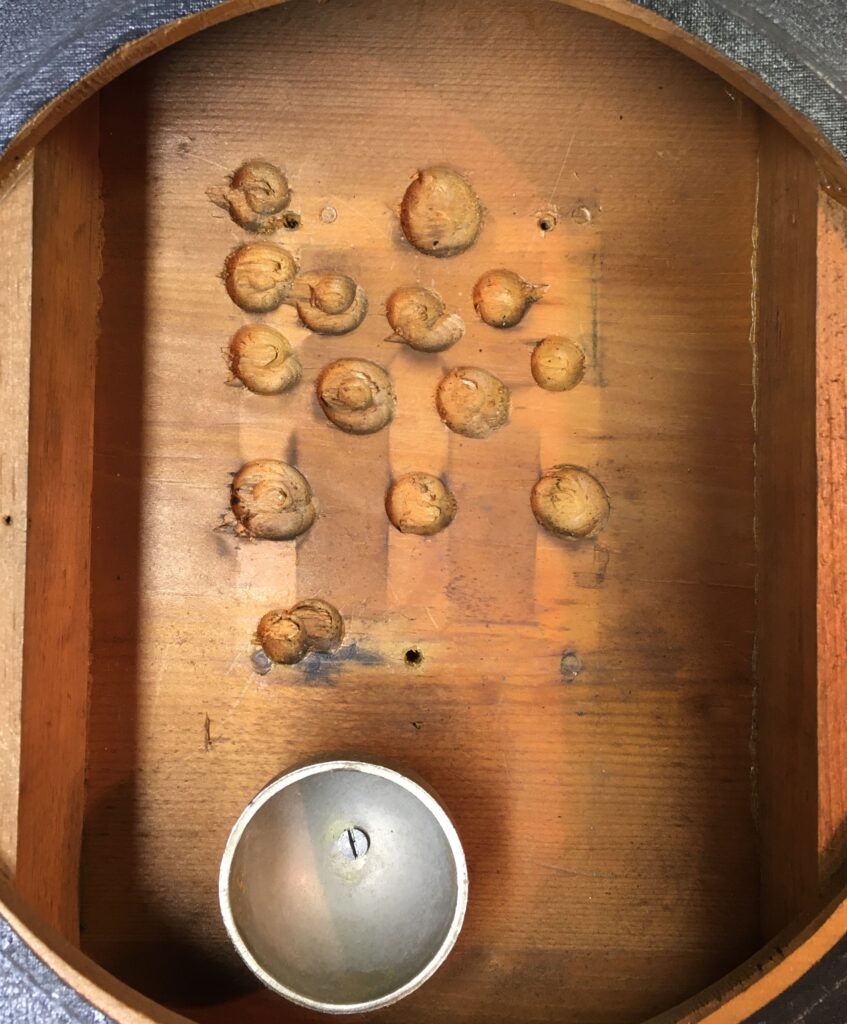This is the largest Jerome & Co. octagon clock that I’ve ever seen. The case measures 12” side-to-side and the dial 9”.
The back of the case has a couple of characteristics of Jerome & Co. clocks with an association to S.B. Jerome: the use of a “wallpaper”-type backing and a green label, this one noting Jerome’s May 9, 1865 patent.
Design patent 2057 was for an octagon case having gilt ornamental molding around the front edge of the case, along with white glass buttons positioned at the points of the octagon.
Front view of what I believe is an unmarked Hubbell 30-hr, time & strike, marine lever movement. The clock strikes the hours (not a ship’s bell strike). I was not able to find another example of this movement in the literature or on the internet, so attribution is tentative. What leads me to believe it was made by Hubbell are the shape of the regulating arm and the tines on the verge/lever assembly, which match Hubbell movements.
Rear view of the movement.
Detail showing a portion of the verge/lever assembly. The shape of the tines in the verge/lever assembly is believed by Richard Hubble to be pre-1865 (NAWCC Bull. No. 406, pg 586). Given that this movement is in a case with a May 9, 1965 patent label, the tine shape must have been used into 1865 and possibly a little bit beyond.
When mounted in the case, the movement has a strike trip lever activated by a wire that extends through a hole in the bottom of the case.
Space was at such a premium that the makers had to carve out divots in the backboard to allow the arbor to spin freely.
